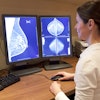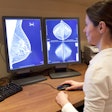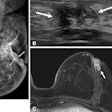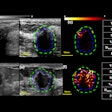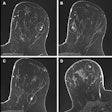Latina women were nearly twice as likely to obtain breast cancer screening after trained community health workers visited their homes, according to a new study in Cancer Epidemiology, Biomarkers and Prevention.
Breast cancer is the leading cause of cancer deaths among Hispanic women, and Hispanics are more likely than whites to be diagnosed with breast cancer at later stages, when the cancer is more difficult to treat. Therefore, the role of community health workers, known in Spanish as "promotoras," is critical, the authors noted (Cancer Epidemiol Biomarkers Prev, April 2016, Vol. 25:4, pp. 584-592).
"Promotora visits are essential in educating Latina women about the importance of breast cancer screening," said Gloria Coronado, PhD, lead author and cancer disparities researcher at the Kaiser Permanente Center for Health Research in Portland, OR, in a statement.
The study used data from the Fortaleza Latina program, which recruited 536 Hispanic women ages 42 to 74 from the Seattle area. The researchers used electronic medical record information to verify that the women had not received a mammography exam during the previous two years. The women completed surveys at the beginning of the study in 2011 and at its end in 2014.
Eighty percent of participants were born in Mexico, and 92% preferred speaking Spanish. Nearly three-quarters of the women lacked health insurance, and most had completed fewer than eight years of formal education.
The women were randomly selected to receive visits at home from promotoras or to receive their usual care, which sometimes included reminders from primary caregivers that they were due for a mammogram. Promotoras received at least three days of training on motivational interviewing techniques and information regarding breast cancer and mammography.
The study showed a modest but significant improvement in screening rates for women who received a promotora visit. More than 19% of women who received the visits completed a mammogram within a year, compared with 11% who did not receive a visit. The presence of mobile mammography vans at some sites in the community did not increase screening rates, the authors noted.
The study highlights the importance of involving patients, clinics, and communities in efforts to increase screening, and offered insight for future work, the study team wrote.
